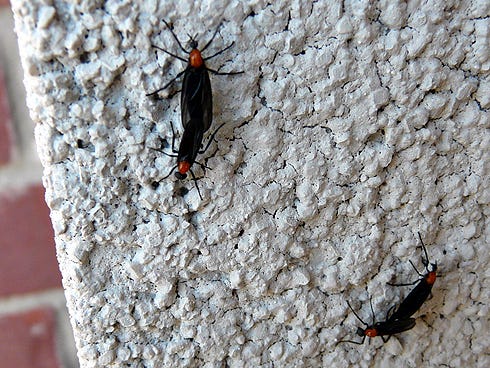
The lovebug, an invasive Central American species, migrated through Texas and Louisiana to get to Florida in the late 1940s. Prevailing winds, vehicle traffic, sod transport, increased habitat along highways and expansion of pastures may have assisted the lovebugs' movement throughout Florida.
However, despite rumors, University of Florida researchers did not genetically engineer lovebugs to kill mosquitoes.
The evidence? Forget insects; lovebugs feed on flowers' pollen and nectar. They lack jaws and grasping legs to hold onto and eat mosquitoes. They are too slow-flying to go after mosquitoes. Lovebugs are active during the day — usually between 10 a.m. and 4 p.m., in temperatures above 84 degrees Fahrenheit; most mosquitoes are out evenings. Lovebugs are only adults a few weeks each year; mosquitoes are active most of the year.
So the lovebug would be a poor candidate to genetically engineer as a mosquito predator.
Now more facts: Lovebugs are attracted to diesel and gasoline exhaust fumes. Female lovebugs are attracted to UV irradiated aldehydes, a major component of automobile exhaust fumes. They may confuse these chemicals with odors emitted from decaying organic matter where the female deposits her eggs. Heat also attracts lovebugs and may be another reason for their abundance along highways.
Lovebug larvae feed on decaying plant material, assisting with converting plant debris into organic components that can again be used by the growing plants.
Also: Although lovebugs can be a problem as they splatter on our automobiles, be thankful they don’t bite, sting or hang around all year.
Larry Williams is an agent at the University of Florida's Extension office in Crestview.
This article originally appeared on Crestview News Bulletin: EXTENSION CONNECTION: The truth about lovebugs
